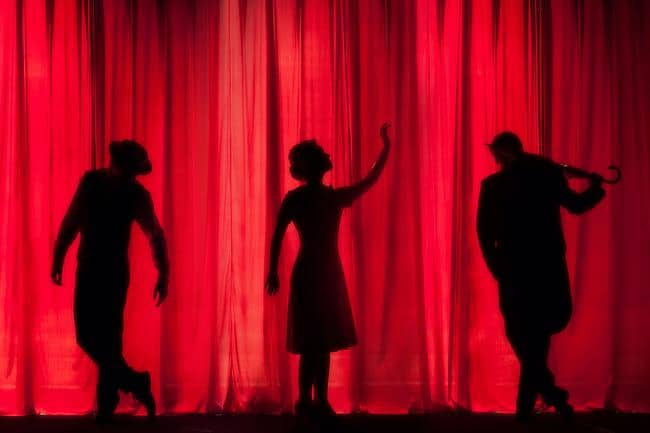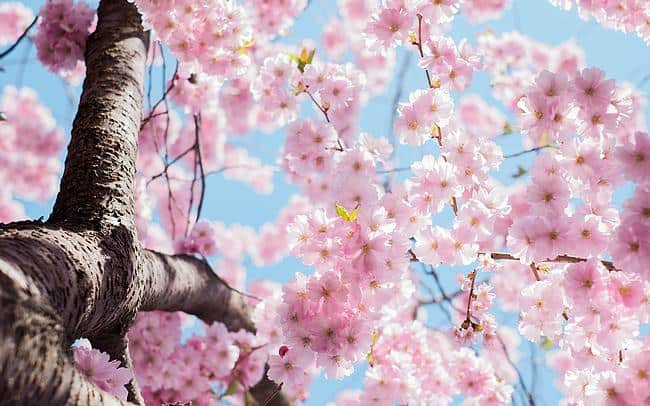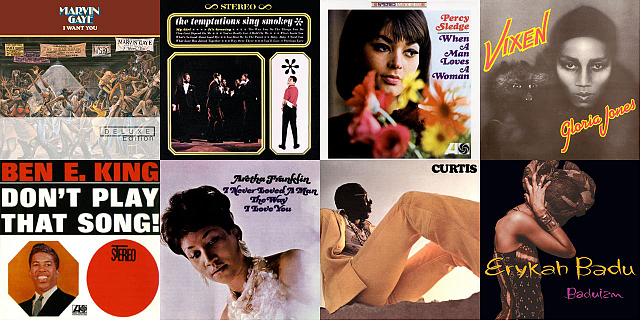Table of Contents
The second half of the 19th century. The nineteenth century is considered the golden age of opera. But even outside this era, there is a wealth of unforgettable opera arias that continue to captivate listeners to this day.
Many famous opera arias have long become an integral part of our culture and enjoy great popularity. We present you with the most popular operas in the world.
Ombra Mai Fu, Xerxes
The aria from the opera “Xerxes” by composer George Frideric Handel was originally written for a castrato voice. Today the aria is sung by alto or mezzo-sopra№
Handel’s best-known opera is about love, intrigue, deceit, and betrayal. “Ombra Mai Fu” is sung by the Persian king Xerxes in Act I and is meant as a song of praise to a sycamore tree whose beauty Xerxes enjoys. Although “Xerxes” was first performed in 1738, the opera did not reach the stage until the 20th century. The popularity of the twentieth century. “Ombra Mai Fu” is one of the most famous baroque arias and is often performed at opera evenings.
Lascia ch’io pianga, Rinaldo
The aria from George Frideric Handel’s opera “Rinaldo” is one of the most famous melodies of classical music and is often performed in the context of chamber music evenings. The opera “Rinaldo” tells the story of a crusade in which the Christian virgin Almirena falls into Saracen captivity and asks the king for freedom.
Among the most famous versions of the aria is the one from the film “Farinelli,” for which a soprano and a countertenor’s voice were mixed to create the impression of a castrato voice.
Voi che sapete, The Marriage of Figaro
This seemingly innocent aria from “The Marriage of Figaro” is cheeky and a bit revealing. Cherubino, a lovesick court page, sings it.
This is a classical trouser role because “Voi che sapete” was composed for soprano. The light and entertaining aria is one of Mozart’s most sung and captivates with its haunting words and catchy melody. “The Marriage of Figaro” was first performed at the Burgtheater in Vienna in 1786 and told of the preparations for the wedding of the servant couple Figaro and Susanna.
Der Hölle Rache kocht in meinem Herzen, The Magic Flute
The opera world would be unimaginable without her: the aria of the vengeful Queen of the Night from Mozart’s opera “The Magic Flute” is both stirring and intoxicating. The coloratura aria is a bravura piece tackled only by the best singers and requires an exceedingly high tessitura. In his last opera, Mozart devotes himself to the ideals of Freemasonry, which he wraps up in a colorful fairy tale.
Characteristic is the German libretto and the lavish stage decorations. As is so often the case, Mozart uses the key of D minor to convey the dramatic significance of this aria in a particularly vivid way. “Der Hölle Rache kocht in meinem Herzen” was composed for Mozart’s sister-in-law Josepha Hofer, whose voice is said to have had an exceptionally high register.
Il dolce suono, Lucia di Lammermoor
This beautiful aria with its plaintive recitative will be familiar to most listeners from the film “The Fifth Element”. The aria comes from Gaetano Donizetti’s opera “Lucia di Lammermoor”, which tells of great love and an even greater misunderstanding. Lucia loves Edgardo, the archenemy of her brother Enrico.
She is urged to marry another man, whom she stabs to death on her wedding day. She dies, afflicted by madness, and Edgardo follows her to her end. “Il dolce suono” is also known as the mad aria and is the opera’s climax.
The libretto is based on Walter Scott’s novel “The Bride of Lammermoor” and was written by Salvatore Cammara№
La ci darem la mano, Don Giovanni
The famous duet from Mozart’s opera “Don Giovanni” is sung by Don Giovanni and Zerlina. Don Giovanni tries to win Zerlina for himself, but Elvira thwarts his plans.
The premiere of “Don Giovanni” took place in 1787. The opera is one of the most important of Mozart’s works. In contrast to earlier operas, the arias take a central role and control the plot. A special place was also given to the overture, which Mozart is said to have composed the night before its premiere.
It masterfully introduces the dramatic action of the opera but is also often performed as a stand-alone work.
Casta diva, Norma
The role of Norma from Vincenzo Bellini’s opera of the same name is one of the most demanding female roles of all time. The libretto tells the story of the Druid priestess Norma, who is in love with the Roman proconsul Pollione, with whom she has two children.
After the confusion of love, Norma and Pollione find their way back to each other. “Casta diva” was conceived for the prima donna Giuditta Pasta and combined bravura with the intimacy and warmth of bel canto singing.
Sempre libera, La Traviata
This enchanting duet from Giuseppe Verdi’s masterpiece “La Traviata” is light-hearted and light as a foaming wine. The courtesan Violetta Valéry falls in love with Alfredo Germont, but at the request of Alfredo’s father, she agrees to end her love affair with Alfredo.
With “Sempre libera” Violetta sings the praises of a free, unbound life. “La Traviata” is based on Alexandre Dumas’ novel “The Lady of the Camellias,” and its tragic love story touches opera audiences worldwide.
La donna è mobile, Rigoletto
“Capricious is the woman”: this aria by Franz I. Giuseppe Verdi also made use of this bon mot, later adopted by Victor Hugo, in his opera “Rigoletto” and created one of the most famous arias of all time. The Duke sings it of Mantua in the third act. Its slightly comedic melody has made “La donna è mobile” one of the most popular arias of all time.
Largo al factotum, The Barber of Seville
Giacomo Rossini’s opera “The Barber of Seville” from 1816 is still considered one of the best works of opera buffa, the comic Italian opera. Parts of the aria “Largo al factotum” have even become part of everyday speech. The aria is sung by the title character, who arranges the marriage between his friend, Count Almaviva, and his beloved Rosina.
Rossini composed the “Barber” in only three weeks, but this did not stop him from creating a masterpiece that still enjoys great popularity 200 years later.
Un bel dì, vedremo, Madama Butterfly
Giacomo Puccini’s “Madama Butterfly” is based on the play “Madame Butterfly. A Tragedy of Japan” by the US-American dramatist David Belasco.
The young Butterfly (Cio-Cio San) falls in love with the American naval officer Pinkerton, who leaves her shortly after their marriage. With “Un bel dì, vedremo,” Butterfly expresses her grief and hopes that Pinkerton will return one day. The aria is the highlight of the second act and belongs to the repertoire of every soprano.
The first performance in February 1904 was a fiasco. Puccini revised the opera – the next performance took place already in May of the same year.
Nessun dorma, Turandot
The aria, so masterfully Performed by Luciano Pavarotti, is one of the most important pieces of music for tenor voices. Giacomo Puccini’s last opera is about the implacable princess Turandot, who has every suitor beheaded who cannot solve her riddles.
When Prince Kalaf solves Turandot’s riddle, the princess orders that no one is allowed to sleep until the name of the unknown man is discovered. “Turandot” was premiered at La Scala in Milan in 1936. “Nessun Dorma” has achieved world fame thanks to numerous Performerations and has been used several times as film music.
Kuda, kuda vi udalilis, Eugene Onegin
Tchaikovsky’s famous opera “Eugene Onegin” is based on the verse novel of the same name by the Russian poet Alexander Pushkin. The premiere took place in 1879 at the Moscow Maly Theater.
The aria “Kuda, kuda vi udalilis” (“Where have you disappeared to”) is sung by Lenski in the second act and belongs to the classics of Russian opera melodies. The opera is about the young nobleman Eugene Onegin, who retires to an inherited country estate, and there he meets Vladimir Lensky and his fiancée Olga. Olga’s sister Tatjana falls in love with Onegin, but Onegin rejects her.
Lensky challenges Onegin to a duel and is shot by his opponent. Years later, Onegin meets Tatjana, but she rejects him.
Habanera, Carmen
The Habanera by opera diva Maria Callas remains unforgotten: the aria from Gerges Bizet’s “Carmen,” also known as “L’amour est un oiseau rebelle” (“Love is a wild bird”), is one of the most frequently sung opera melodies. The premiere of “Carmen” took place in 1875 at the Opéra-Comique in Paris. The opera is based on a novella by the French writer Prosper Mérimée.
It deals with a love triangle between the title character, the soldier Don José and the bullfighter Escamillo.
Come hope, Fidelio
Ludwig van Beethoven’s only opera “Fidelio” was conceived as a number opera in which loose recitative passages link the individual arias. The opera “Léonore, ou L’amour conjugal” by Pierre Gaveaux from 1798 served as a model. The premiere took place on 20.
November 1805 in Vienna. Florestan has been missing for two years; Leonore suspects being imprisoned because of a quarrel with governor Don Pizarro. Leonore disguises herself as a man, calls herself Fidelio from then on, and gets herself hired as an assistant to Rocco’s jailer, whose daughter Marzelline falls in love with the supposed youth.
Leonore finds her husband in the dungeon, already on the verge of starvation. When Pizarro wants to kill Florestan, Leonore intervenes – love triumphs. At the premiere, the enthusiasm is limited; only after the third version does Fidelio become a success. “Come hope” is sung in the first act by Leonore.
In the aria, she expresses her despair over her husband’s disappearance.
Belle nuit, ô nuit d’amour, Hoffmann’s Tales
Three stories by the German writer E.T.A. Hoffmann are the basis for Jacques Offenbach’s opera “The Tales of Hoffmann.” In his last opera, the composer combined storylines from “The Sandman,” “Rat Krespel,” and “The Story of the Lost Mirror Image.”
The aria “Belle nuit, ô nuit d’amour” is conceived as a classical barcarole – originally a Venetian boatman’s song. The aria was first incorporated into Offenbach’s opera “Die Rheinnixen” before it got into “The Tales of Hoffmann” in a slightly altered form.
Podrugi milie, Queen of Spades
The dreamy aria “Podrugi milie” (“Dear Girlfriends”) comes from Tchaikovsky’s opera “Queen of Spades,” which had its world premiere in 1890 in St. Petersburg experienced.
The libretto was written by Tchaikovsky’s younger brother Modest and is based on the same name by the Russian poet Alexander Pushkin. The opera was written when the composer was suffering stiff blows of fate. From this, the variation of the narrative material can also be deduced: In Tchaikovsky’s somber version, the aggrieved protagonist Lisa drowns in the Neva River.
Siegmund heiß ich und Siegmund bin ich, The Valkyrie
Together with the operas “Das Rheingold,” “Siegfried” and “Götterdämmerung,” “Die Walküre” forms the “Ring of the Nibelung. Richard Wagner’s tetralogy is one of the most demanding works of classical music and is performed annually as part of the Bayreuth Festival.
The premiere of Die Walküre took place on the 26th of December. June 1870. Love, death, and honor are addressed in this psychologically profound opera.
A highlight is Siegmund’s aria, which musically expresses the incestuous love affair with his twin sister Sieglinde.
Lullaby, Wozzeck
Alban Berg is considered one of the most important composers of the 20. Century.
His work is influenced by late Romanticism and the principle of atonality. Berg’s opera “Wozzeck,” based on the drama fragment Woyzeck by German writer Georg Büchner, uses many musical devices to justify the tragic plot. “Wozzeck” is considered a milestone in opera history. However, it was not until after 1945 that the work achieved worldwide fame thanks to the efforts of famous conductors such as Karl Böhm and Pierre Boulez. “Wozzeck” tells the story of the eponymous protagonist who kills his lover Marie out of jealousy.
Among the opera, highlights is the lullaby from the first act, sung by Marie.
Summertime, Porgy and Bess
George Gershwin’s opera “Porgy and Bess” broke with conventions and depicted life in a residential neighborhood for African Americans in the Southern states. The premiere took place in New York in 1935, and the work was immediately received with enthusiasm. The aria “Summertime” has become one of the most sung songs of all time.
She appears in all three acts of the opera. In 1936 Billie Holiday recorded the aria, and it became a worldwide hit. “Porgy and Bess” is based on the novel “Porgy” by the US-American writer DuBose Heyward, who also wrote the libretto.
La bohème, Puccini
Der Rosenkavalier, Richard Strauss
Otello, Verdi
Eugene Onegin, Tchaikovsky
Falstaff, Verdi
Tosca, Puccini
Don Carlos, Verdi
L’Orfeo, Monteverdi
Wozzeck, Berg
Giulio Cesare, Handel
Dido and Aeneas, Henry Purcell
Tristan and Isolde, Wagner
Orfeo ed Euridice (Orpheus and Eurydice), Christoph Willibald Gluck
Jenůfa, Janáček
Peter Grimes, Ritten
Die Meistersinger von Nürnberg, Wagner
Pelléas et Mélisande, Debussy
L’incoronazione di Poppea, Monteverdi
Idomeneo, Mozart
Don Giovanni, Mozart
Le Nozze di Figaro (The Marriage of Figaro), Mozart
La traviata, Verdi
Il Barbiere di Siviglia (The Barber of Seville), Gioachino Rossini
Der Freischütz, Carl Maria von Webe
The Ring of the Nibelung, Richard Wagner
Carmen, Georges Bizet
Salome, Richard Strauss
Boris Godunov, Modest Mussorgsky
L’Elisir d’Amore (The Elixir of Love), Gaetano Donizetti
Pelléas et Mélisande, Claude Debussy
Lohengrin, Richard Wagner
The Bartered Bride, Bedrich Smetana
Guillaume Tell (William Tell), Gioachino Rossini
Manon, Jules Massenet
The Merry Widow (Die Lustige Witwe), Franz Lehár
The Queen of Spades, Pyotr Ilyich Tchaikovsky
Pagliacci, Ruggero Leoncavallo
War and Peace, Sergei Prokofiev
Les Troyens, Hector Berlioz
The Rake’s Progress, Igor Stravinsky
The essential arias of all times give a good overview of the development of opera in the course of the different musical epochs. From the arias of the baroque era to the splendor of bel canto and Gershwin’s jazzy sounds, here are representatives of every style. Many of the most famous opera arias have been used several times for film and television or by artists of other musical genres as Cover versions recorded.







